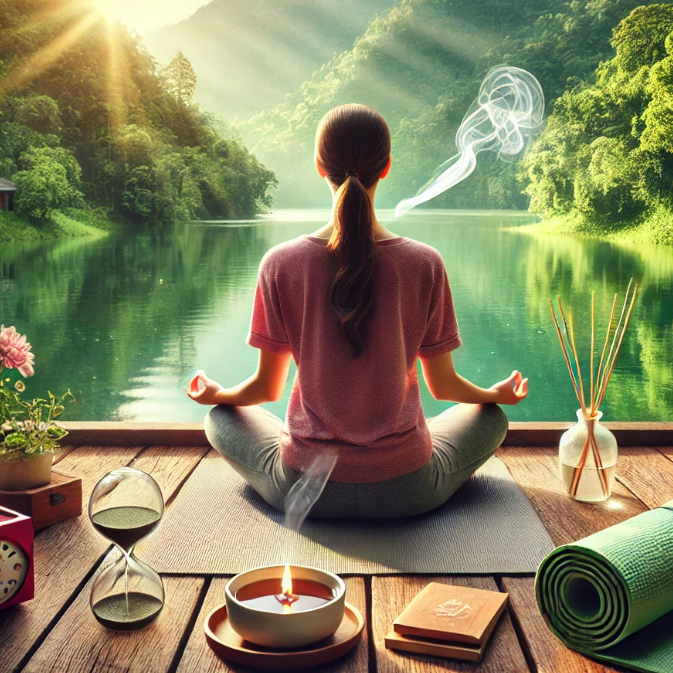Mindfulness and Relaxation Techniques for a Balanced Life

In today’s world, stress and anxiety have become common challenges for many individuals. Finding ways to manage daily stressors and promote emotional well-being is essential for a balanced and fulfilling life. At Rosewood Therapy, we emphasize the importance of mindfulness and relaxation techniques as effective tools to enhance mental health and overall wellness.
What is Mindfulness and Relaxation?
Mindfulness is the practice of being fully present in the moment, aware of your thoughts, feelings, and surroundings without judgment. It encourages a deeper connection with oneself and fosters a sense of calm and clarity. Incorporating mindfulness into daily life can help manage stress, improve focus, and enhance emotional resilience.
The Benefits of Mindfulness
Practicing mindfulness regularly can provide numerous benefits, including:
- Reduced Stress Levels: By focusing on the present moment, mindfulness can help alleviate stress and prevent overthinking.
- Improved Emotional Regulation: It encourages greater self-awareness and helps individuals respond to situations calmly and thoughtfully.
- Enhanced Concentration: Mindfulness techniques can improve focus and cognitive function, making it easier to stay on task.
- Better Sleep Quality: Engaging in mindfulness before bedtime can promote relaxation and reduce insomnia.
- Increased Self-Compassion: Mindfulness helps foster a positive relationship with oneself by reducing negative self-talk.
Relaxation Techniques for Everyday Life
Relaxation techniques are methods that promote a state of calm and reduce physical and emotional tension. These techniques can be easily integrated into daily routines to enhance well-being and resilience.
Deep Breathing Exercises
Deep breathing is a simple yet powerful mindfulness and relaxation technique that helps reduce stress and promote relaxation. Practicing deep breathing involves:
- Inhaling slowly through the nose, filling the lungs with air.
- Holding the breath for a few seconds.
- Exhaling slowly through the mouth.
This practice can help lower blood pressure, reduce muscle tension, and calm the mind.
Progressive Muscle Relaxation (PMR)
PMR is a technique that involves tensing and then relaxing different muscle groups in the body. This method helps release physical tension and promotes a sense of calm. To practice PMR:
- Start by tensing the muscles in your feet for a few seconds.
- Gradually move up through the body, tensing and releasing each muscle group.
- Focus on the sensation of relaxation as tension dissipates.

Guided Imagery
Guided imagery involves visualizing calming scenes or scenarios to promote relaxation. This technique helps divert attention from stressors and encourages a peaceful mental state. Common guided imagery exercises include:
- Imagining yourself in a serene beach setting.
- Visualizing a peaceful forest walk.
- Focusing on positive affirmations and encouraging thoughts.
Meditation
Meditation is a well-established practice that involves focusing the mind and eliminating distractions to achieve a state of relaxation. There are various types of meditation, including:
- Mindfulness Meditation: Observing thoughts and sensations without judgment.
- Loving-Kindness Meditation: Cultivating feelings of compassion and love for oneself and others.
- Body Scan Meditation: Paying attention to physical sensations from head to toe.
Yoga and Stretching
Yoga combines physical movement, breath control, and meditation to enhance overall well-being. Regular yoga practice can:
- Improve flexibility and strength.
- Reduce stress and anxiety.
- Enhance mental clarity and focus.
Simple stretching exercises can also help relieve muscle tension and promote relaxation throughout the day.
Journaling
Expressing thoughts and emotions through writing can be a therapeutic way to process feelings and gain insight into one’s emotional state. Journaling can help:
- Identify stress triggers.
- Track progress in mindfulness and relaxation practices.
- Cultivate gratitude and positive thinking.
Listening to Calming Music
Music has a profound effect on mood and can be used as a relaxation tool. Listening to soothing music, nature sounds, or instrumental tracks can help reduce anxiety and promote a peaceful environment.
How to Incorporate Mindfulness and Relaxation into Daily Life
Integrating helpful techniques into your routine doesn’t have to be complicated. Here are some practical ways to incorporate these practices daily:
- Morning Routine: Start your day with a few minutes of deep breathing or meditation to set a positive tone.
- Work Breaks: Take short breaks to practice mindfulness by focusing on your breath or doing a quick stretch.
- Evening Wind-Down: Establish a calming bedtime routine, such as listening to soft music or practicing progressive muscle relaxation.
- Mindful Eating: Pay attention to the flavors, textures, and sensations while eating without distractions.
Seeking Professional Guidance

At Rosewood Therapy, we understand that developing mindfulness and relaxation habits can take time and effort. Our professional therapists can guide you through personalized strategies to incorporate these techniques into your life effectively. Whether you’re struggling with anxiety, stress, or simply looking to enhance your well-being, our team is here to support you.
Mindfulness and relaxation techniques are powerful tools that can help you achieve a balanced and healthier lifestyle. By practicing these methods regularly, you can experience reduced stress, improved mental clarity, and a greater sense of well-being.
If you’re ready to embark on your mindfulness journey, Rosewood Therapy is here to provide the guidance and support you need. Visit our Mindfulness and Relaxation Techniques page to learn more about our services and start your path to a more relaxed and fulfilling life.